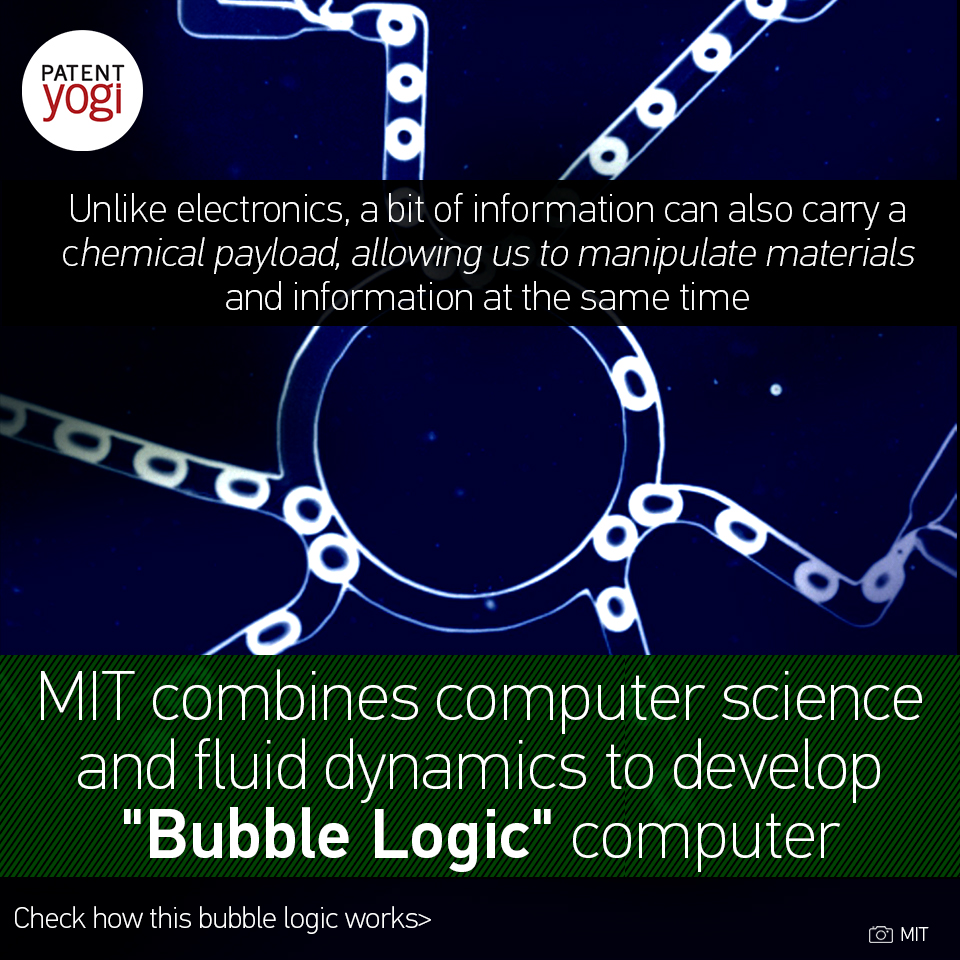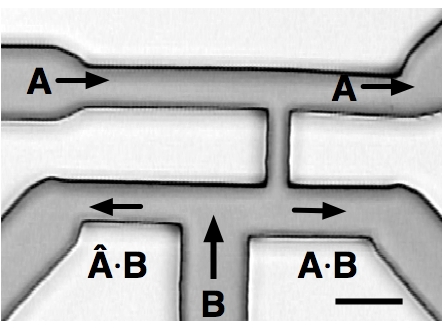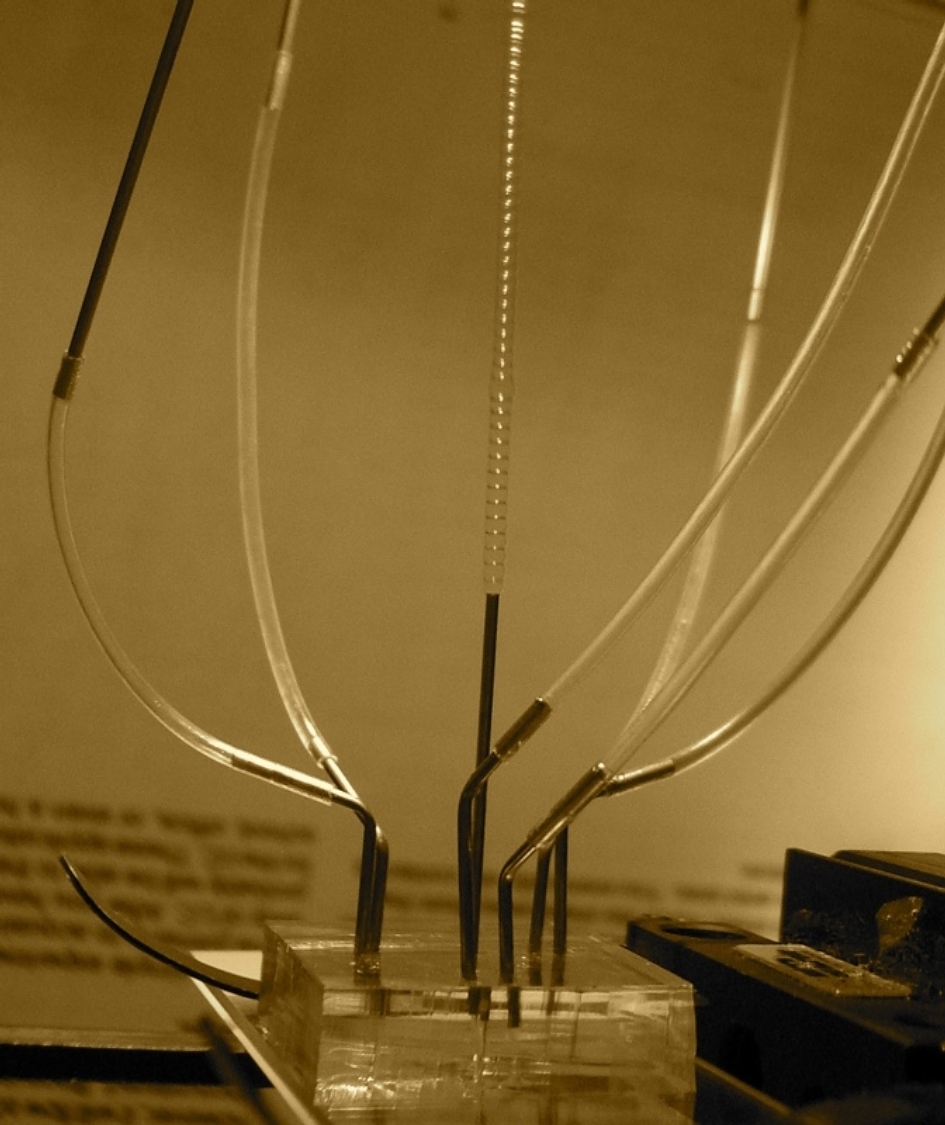MIT has invented a new logic family which implements universal Boolean logic, bistability and numerous other traits associated with a scalable logic family using immiscible fluids in microfluidic geometries. A bubble in a channel represents a bit. But unlike electronics, a bit of information can also carry a chemical payload, allowing them to manipulate materials and information at the same time. This paradigm ties together chemistry and computation.
Fluidics was a competing technology to solid-state electronics in the 1960’s and 1970’s. Several large-scale all-fluidic control systems were demonstrated during that time. Such fluidic gates were used to build a trajectory controller, an all-fluidic display, non-destructive memory and a simple computer. Because viscous and surface tension forces dominate fluid dynamics at small scales, these devices could not be miniaturized further, resulting in limitations in large-scale integration. With miniaturization, which was necessary for higher operating speeds and integration, it was impossible to maintain high Reynolds number flow in microscopic geometries. Fluidic approaches to control and logic applications were therefore eventually abandoned due to the inherent disadvantage that they could not be scaled down below millimeter scale because of their dependence on inertial effects. Furthermore, fluidic technology in the 1960’s primarily used analog representations. This did not provide the state restoration benefits obtained with digital logic.
A recent patent application from MIT discloses that MIT has been successful in constructing fluid-based no-moving part logic devices from complex sequences of micro- and nanofluidic channels, on-demand bubble modulators and generators for programming the devices, and micro- and nanofluidic droplet memory elements for storage and retrieval of biological or chemical elements.

The input sequence of bubbles encodes information, with the output being another sequence of bubbles or on-chip chemical synthesis. For performing a set of tasks, the modulators can be used to program the device by producing a precisely timed sequence of bubbles, resulting in a cascade of logic operations within the micro- or nanofluidic channel sequence, utilizing the generated droplets/bubbles as a control. The devices are based on the principle of minimum energy interfaces formed between the two fluid phases enclosed inside precise channel geometries. Various devices, including logic gates, non-volatile bistable memory, ring oscillators, bubble synchronizers, analysis chips, sample collectors, and printers have been designed.
Universal Logic – Nonlinear bubble interactions by hydro-dynamic force fields are exploited to build universal logic gates operating at low Re number in newtonian fluids.

Microfluidic memory – Bistable one-bit bubble memory for storage of both information and chemicals at the same time.
Bubble circuits – Bubble logic devices can be cascaded to form numerous digital circuit elements like ring oscillators, counters.
Bubble synchronization – Non-linear fluidic ladder networks are used to synchronize two streams of bubbles, thus correcting any timing error.
Bubble modulator – Bubbles can be generated on demand to encode information in a train of bubbles.

Publication number: US 20160341637
Patent Title: Microfluidic Bubble Logic Devices
Publication date: 24 Nov 2016
Filing date: 2 Aug 2016
Inventors: Manu Prakash; Neil Gershenfeld;
Original Assignee: Massachusetts Institute of Technology

